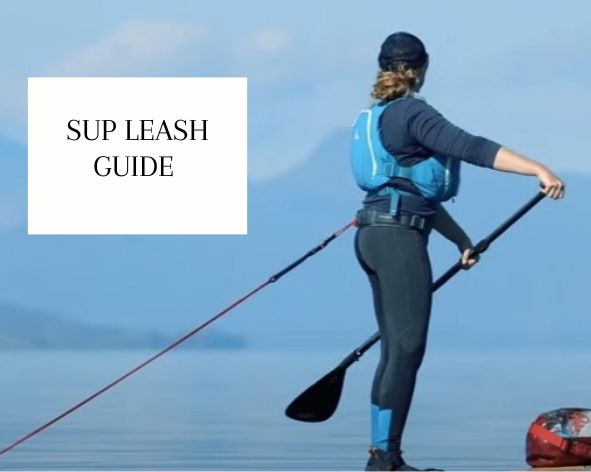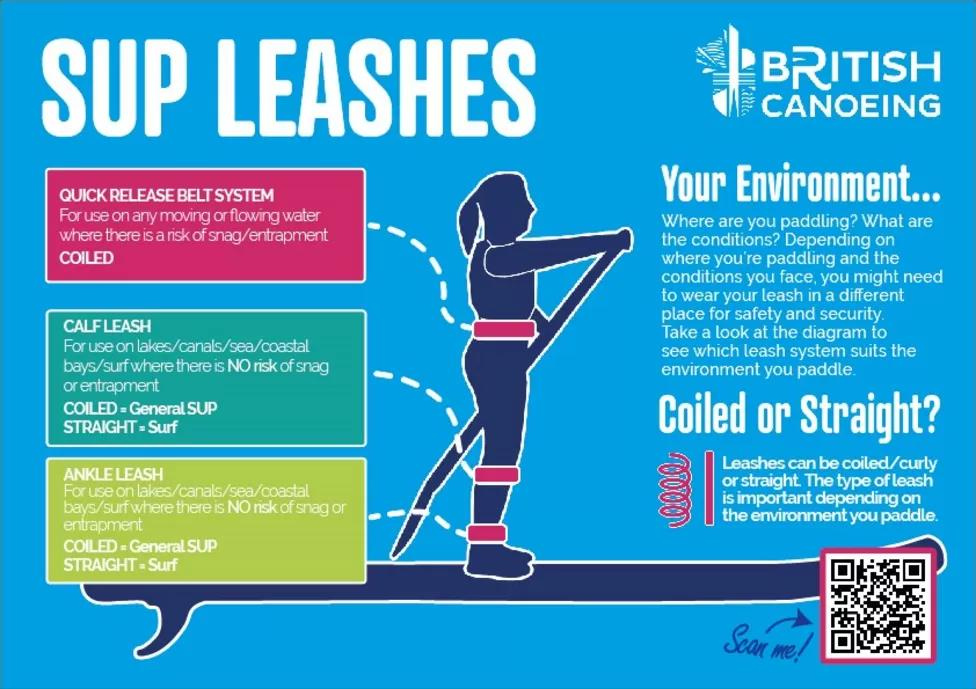
The type of SUP Leash is important according to the type of water you are on. Read our quick guide as wearing the wrong leash on any moving water can cause the leash to become snagged or caught on obstacles leading you to become entangled or trapped
- Coiled. The length of the leash is coiled – general SUP use & whitewater
- Straight. You would use a straight leash only for surfing.
- Ankle Leash – Suitable for lakes, canals, sea / coastal bays, surf and slow moving deepwater rivers, where there is NO risk of snagging or entrapment. These are the most common leash, often comes with the bodyboard. They are easy to wear and to fit.
- Calf Cuff/Knee Leash – Suitable for lakes, canals, sea / coastal bays, surf and slow moving deepwater rivers where there is NO risk of snagging or entrapment. These are similar to an ankle leash but the cuff attachment is slightly larger and fits just below your knee. Some people may prefer this type of leash for ease of attachment but the environments in which they should be used are similar.
- Quick release belt system – Any moving/flowing water including, rivers, tidal rivers and estuaries, tidal races, white water rivers where there is a risk of snagging or entrapment. It can be easily reached if you come off your board and are caught or held by the force of the water. When fitted and used correctly it releases you from your SUP board and leash attachments freeing you from any dangerous entanglement. Ideally wear the quick release sup belt on top of your buoyancy aid. You can attach the cuff from a coiled leash, which would normally attach to your ankle or calf, to the waist belt too.
We really can recommend the British Canoeing Start Award. Having completed this and the discover award, you learn a huge amount about SUP safety.
References:
British Canoeing
Go Paddling

